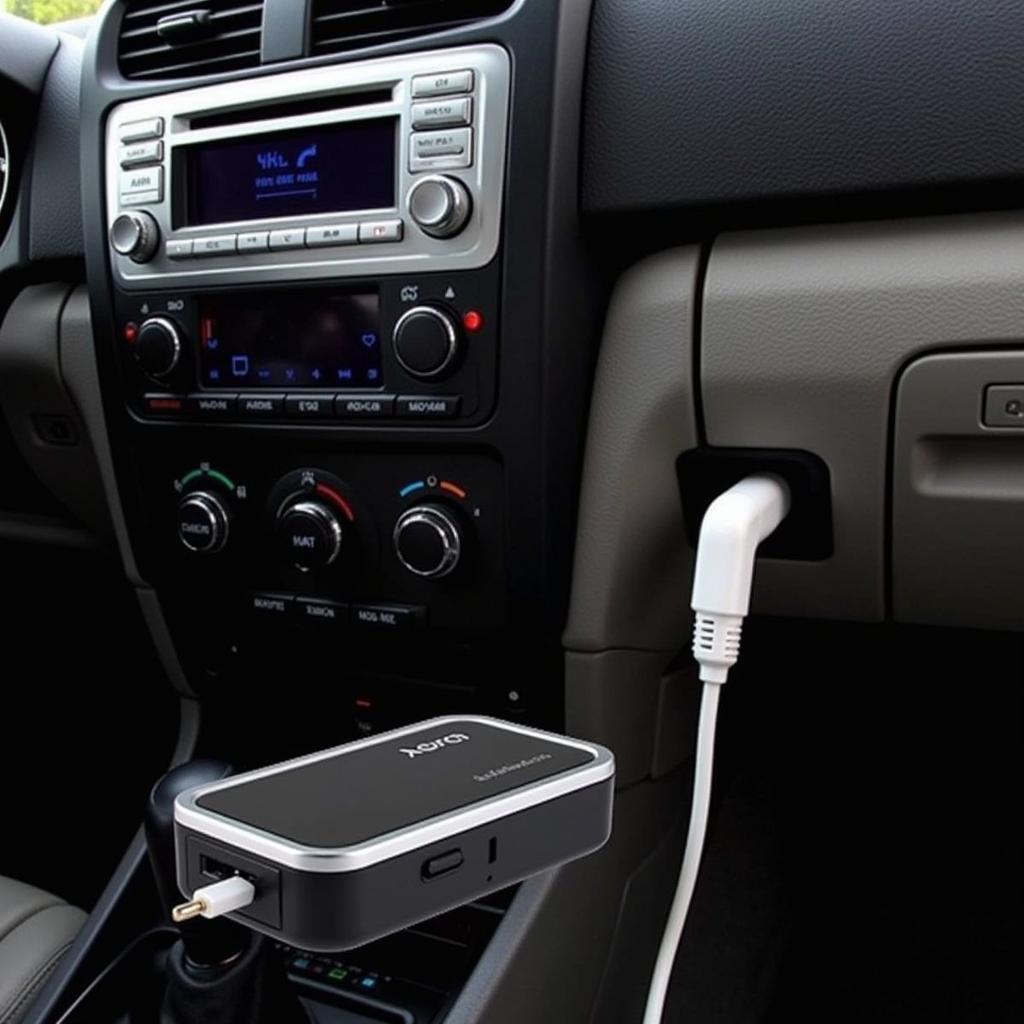A dead car battery overnight can be incredibly frustrating, especially in a new car. You expect your vehicle to start reliably, and when it doesn’t, it throws a wrench in your day. This article explores the common causes of a new car battery dying overnight and provides practical troubleshooting steps and solutions to get you back on the road.
Why is My New Car Battery Dying Overnight?
There are several reasons why a new car battery might die overnight. While a faulty battery is possible, it’s often not the primary culprit, especially in a new vehicle. Let’s delve into the most common causes:
Parasitic Drain: The Silent Battery Killer
One of the most frequent reasons for a new car battery draining overnight is a parasitic drain. This occurs when an electrical component continues to draw power even after the car is turned off. Think of it as a small energy vampire slowly sucking the life out of your battery. Common culprits include interior lights, faulty door switches, aftermarket accessories, and even the car’s computer system.
Faulty Alternator: Not Charging Properly
Another potential issue is a faulty alternator. The alternator’s job is to recharge the battery while the engine is running. If the alternator isn’t functioning correctly, it won’t replenish the battery’s charge, leading to a dead battery, even if it’s new.
Extreme Temperatures: Impact on Battery Performance
Extreme temperatures, both hot and cold, can significantly impact battery performance. Cold weather can slow down the chemical reactions within the battery, reducing its capacity. Excessive heat can accelerate battery degradation and shorten its lifespan.
Troubleshooting a Dead Battery: A Step-by-Step Guide
If you find your new car battery dead overnight, here’s a step-by-step guide to help you troubleshoot the issue:
- Jump Start the Car: First, jump-start your car using jumper cables and another vehicle or a portable jump starter.
- Check the Battery Voltage: Once started, use a multimeter to check the battery voltage. A healthy battery should read around 12.6 volts.
- Test the Alternator: With the engine running, the voltage should increase to around 14 volts, indicating the alternator is charging. If the voltage remains low, the alternator may be faulty.
- Inspect for Parasitic Drain: With the engine off and all accessories turned off, use a multimeter to measure the current draw. A small drain is normal, but a significant drain suggests a parasitic draw.
- Identify the Culprit: If you suspect a parasitic drain, systematically remove fuses one at a time while monitoring the current draw with the multimeter. When the current draw drops significantly, you’ve likely identified the circuit with the problematic component.
 Testing Car Battery with Multimeter
Testing Car Battery with Multimeter
Solutions and Prevention
Once you’ve identified the cause of the dead battery, you can take appropriate action:
- Replace the Battery: If the battery is faulty, replace it with a new one.
- Repair or Replace the Alternator: A faulty alternator needs to be repaired or replaced.
- Address Parasitic Drain: Fix the underlying cause of the parasitic drain, such as a faulty switch or aftermarket accessory.
“Regularly checking your battery’s health and charging system can prevent unexpected breakdowns and extend the battery’s lifespan,” advises John Smith, Senior Automotive Electrical Engineer at AutoTech Solutions.
Preventing Future Battery Issues: Proactive Measures
To prevent future battery problems:
- Limit Short Trips: Short trips don’t give the alternator enough time to fully recharge the battery.
- Turn Off Accessories: Ensure all lights and accessories are turned off when the car is parked.
- Regular Battery Maintenance: Periodically clean the battery terminals and check the electrolyte level (for non-sealed batteries).
“Investing in a battery maintainer can be beneficial, especially during periods of infrequent use or extreme temperatures,” adds Sarah Jones, Lead Technician at BatteryCare Experts. This device helps keep the battery fully charged, preventing it from dying prematurely.
Conclusion
A new car battery dying overnight can be a nuisance, but by understanding the common causes and following the troubleshooting steps outlined in this article, you can quickly identify and resolve the issue. Regular maintenance and proactive measures can help prevent future battery problems, ensuring your car starts reliably every time. Don’t let a dead battery ruin your day – take control and keep your car running smoothly.
FAQ
- How long should a new car battery last? Typically, a new car battery should last between 3 to 5 years.
- Can leaving the headlights on overnight drain a new battery? Yes, leaving the headlights on overnight can drain even a new battery.
- Is it safe to jump-start a new car? Yes, it is generally safe to jump-start a new car, but follow the proper procedure.
- What are the signs of a bad alternator? Dim headlights, flickering dashboard lights, and a whining noise from the engine are signs of a bad alternator.
- How can I test for a parasitic drain myself? You can test for a parasitic drain using a multimeter and the steps outlined in this article.
- Can extreme temperatures damage a car battery? Yes, both extreme heat and cold can negatively impact battery performance and lifespan.
- How often should I check my car battery? It’s a good idea to check your car battery at least twice a year, especially before winter and summer.


